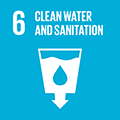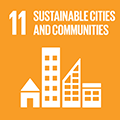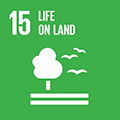Households and the Environment Survey, 2019
Archived Content
Information identified as archived is provided for reference, research or recordkeeping purposes. It is not subject to the Government of Canada Web Standards and has not been altered or updated since it was archived. Please "contact us" to request a format other than those available.
Released: 2021-06-01
Every day, Canadian households make decisions that have an environmental impact, whether it be how they shop, what they do with their organic waste or how they heat their home on a cool spring evening. New data released today shed light on various Canadian household practices in the year preceding the pandemic.
The increasing popularity of online shopping means more cardboard boxes
Online shopping has been increasing steadily over the past few years. With the convenience of shopping from home comes an increase in the use of cardboard boxes. Just over three-quarters of Canadian households (76%) made at least one online purchase in 2019 and virtually all online shoppers (98%) reported that their purchases arrived in a cardboard box.
Making online purchases is correlated with a household's income. The higher the income in 2019, the more likely an online purchase was made in the previous 12 months. Households at the low end of the income spectrum (those with an income of less than $20,000) were the least likely to have made an online purchase, with less than half (46%) reporting that they had done so, compared with 95% of households with an annual income of $150,000 or more.
Online sales have surged since the onset of the pandemic, rising 70.5% in 2020. The share of online sales out of total retail sales rose from 3.5% in 2019 to 5.9% in 2020. The gain in online shopping has led to a 12.8% increase in converted paper products manufacturing, on greater demand for paper bags and corrugated and solid fibre boxes during the pandemic.
Almost two-thirds of Canadian households divert organic kitchen waste
In 2019, 62% of Canadian households reduced the amount of organic kitchen waste that was sent to landfills by separating it from their garbage. Of those that did, three-quarters set it aside for curbside pickup, 30% put it in a compost bin or pile and 3% took it to a depot. Households in Prince Edward Island (95%) and Nova Scotia (90%) were the most likely to have done this, while those in Newfoundland and Labrador and Manitoba (both at 34%) were the least likely do so.
Yard waste, such as leaves and grass clippings, is another significant source of organic waste produced by Canadian households. Of those households that had a lawn or garden, almost four out of five (79%) reported that they composted their yard waste in 2019. The most popular method was via a curbside collection program (73% of households that composted their yard waste), while 10% used a depot and 26% put their yard waste in a compost bin or pile.
Households in British Columbia (87%) and Ontario (86%) were the most likely to compost their yard waste in 2019, while households in New Brunswick (50%) were the least likely to do so.
Over one-third of Canadian households use four or more plastic drinking straws a week
Single-use plastics, such as plastic bags, plastic bottles and plastic drinking straws, are major components of pollution. The Government of Canada announced a reduction strategy in 2020 that aims to transition away from single-use plastics to more environmentally friendly substitutes such as paper or biocompostable plastics. Included on the list of products that will become less available are plastic drinking straws.
During a typical week in 2019, 23% of Canadian households used at least one plastic straw. Of those that did, approximately one-quarter (26%) reported using one straw per week, one-quarter (25%) used two straws, 11% used three straws, while over one-third (38%) used four or more straws per week. Overall, for households that used at least one straw per week, this works out to an average of almost two plastic straws per person each week, or about 100 straws per person a year.
Households in Newfoundland and Labrador (31%), Alberta (30%) and Saskatchewan (29%) were the most likely to have used at least one straw in a typical week in 2019, while those in Quebec were the least likely (17%).
Almost one in five Canadian households reports burning wood at their primary dwelling
Almost one in five (19%) Canadian households reported burning wood at their primary dwelling in 2019, either indoors in a fireplace or wood stove, or outdoors in a fire pit. Whether wood was burned indoors or outdoors, almost 4 million full cords of wood were burned in 2019 in Canada, or enough wood to lay a two metre wide stack of wood one metre high across the entire length of the Trans-Canada Highway. This works out to an average of 1.4 full cords for each household that used wood, or about 5 cubic metres of wood per household. This produced almost 23 000 megajoules of energy per wood-burning primary dwelling in Canada. One megajoule of energy is the equivalent of running a 100-watt lightbulb for just under three hours.
Wood pellets are a wood-based heating fuel used in appliances such as high-efficiency wood stoves and boilers. Relative to the overall use of wood as a fuel, the uptake of wood pellets is low, with 1% of households using them in their primary dwelling in 2019. Nevertheless, this amounted to 196 million kilograms of wood pellets burned, or about 1 361 kilograms per household that used them. This produced the equivalent of about 3.7 billion megajoules of energy.
About 5% of Canadian households reported having a secondary dwelling such as a cottage, cabin or hobby farm in 2019. Of those that did, almost half (48%) reported that they burned wood at their secondary dwelling. Approximately 285,000 full cords of wood or about three-quarters of a full cord per household were burned at secondary dwellings in 2019.
Sustainable Development Goals
On January 1, 2016, the world officially began implementation of the 2030 Agenda for Sustainable Development—the United Nations' transformative plan of action that addresses urgent global challenges over the next 15 years. The plan is based on 17 specific sustainable development goals.
The Households and the Environment Survey is an example of how Statistics Canada supports the reporting on the Global Goals for Sustainable Development. This release will help to measure the following goals:



Note to readers
The Households and the Environment Survey (HES) asks Canadian households about their activities and behaviours with respect to the environment. It covers a wide variety of topics including water and energy consumption and conservation, hazardous products used in the home, and the household's interactions with nature. Data from the survey are used by governments to guide policies and programs, by researchers to learn more about Canadians and by individuals to see how they compare with the rest of the country.
In 2019, the HES surveyed approximately 22,000 households.
The target population of the 2019 HES consisted of households in Canada, excluding households located in Yukon, the Northwest Territories and Nunavut, households located on reserves and in other Indigenous settlements in the provinces, and households consisting entirely of full-time members of the Canadian Armed Forces. Institutions and households in certain remote regions were also excluded.
First conducted in 1991, the HES was subsequently conducted in 1994, 2006 and every second year starting with 2007. Some of the environmental variables from the first cycle continue to be measured, but many new topics have been introduced over the years.
Contact information
For more information, or to enquire about the concepts, methods or data quality of this release, contact us (toll-free 1-800-263-1136; 514-283-8300; STATCAN.infostats-infostats.STATCAN@canada.ca) or Media Relations (613-951-4636; STATCAN.mediahotline-ligneinfomedias.STATCAN@canada.ca).
- Date modified:
